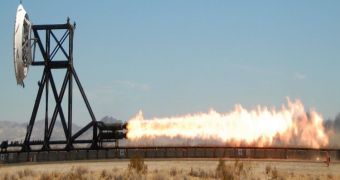One of the things that NASA engineers are most aware of when it comes to exploring the Red Planet, is that they need to come up with advanced deceleration technologies as soon as possible. Current techniques for cushioning the landing of spacecraft on Mars will simply not cut it anymore.
By the early 2030s, the American space agency needs to put astronauts on the surface of our neighboring world, but there is currently no way to slow down the descent of a spacecraft large enough to carry both the crew and the cargo the latter needs to survive.
Even after being slowed down by the process of entering Mars' atmosphere, vehicles travel at speeds exceeding 1,000 miles per hour (447 meters per second). They need to deploy a parachute as fast as possible, which further reduces their speed, to around 200 miles per hour (89.5 meters per second).
Once this objective is reached, the spacecraft usually have only a few more seconds until they reach the surface, and are located at an altitude of roughly 300 feet (91 meters). NASA then uses either airbags, rockets or a combination of rockets and tethers to land.
However, none of these approaches can land cargo of the weight needed to ensure the first manned expedition to Mars does not perish. As such, deceleration technologies will have to be improved well beyond current capabilities.
“We have now outgrown that capability and need to develop a larger parachute that will enable a larger payload,” says scientist Mark Adler, who is based at the NASA Jet Propulsion Laboratory (JPL), in Pasadena, California. He manages a new technology demonstration effort.
Dubbed the Low-Density Supersonic Decelerator Project, it revolves around researching inflatable decelerators and advanced parachutes for Martian landings. The JPL team will test the new approach in wind tunnels, rocket-powered test flights and rocket sleds.
“The project includes three decelerators. Two are inflatable – very large (20 feet and 26 feet in diameter, respectively), durable, balloon-like pressure vessels that inflate around the perimeter of the entry vehicle to enhance drag in the Martian atmosphere at supersonic speeds (greater than Mach 3.5) and slow the vehicle to Mach 2,” NASA reports.
“The third device is a parachute measuring 110 feet in diameter that will further slow the entry vehicle from Mach 2, or nearly 1,100 mph, to less than 175 mph. All three devices will be the largest of their kind ever flown at such high supersonic speeds,” the agency concludes in a statement.

 14 DAY TRIAL //
14 DAY TRIAL //